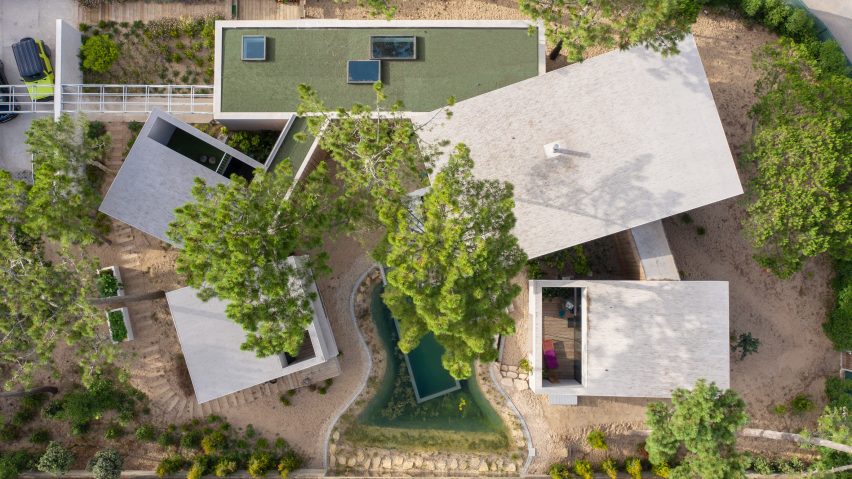
Atelier Data completes house between pine trees in Portuguese national park
Local studio Atelier Data has built the Praia Grande house in Portugal's Sintra-Cascais Natural Park, which is made from five interconnected volumes and features a swimming pool designed to look like a pond.
Atelier Data's Praia Grande consists of five volumes clad in metal-sheet facades and finished in projected cork.
These were placed to fill a gap between the protected trees in the national park, with some lifted to ensure vegetation could grow underneath them.
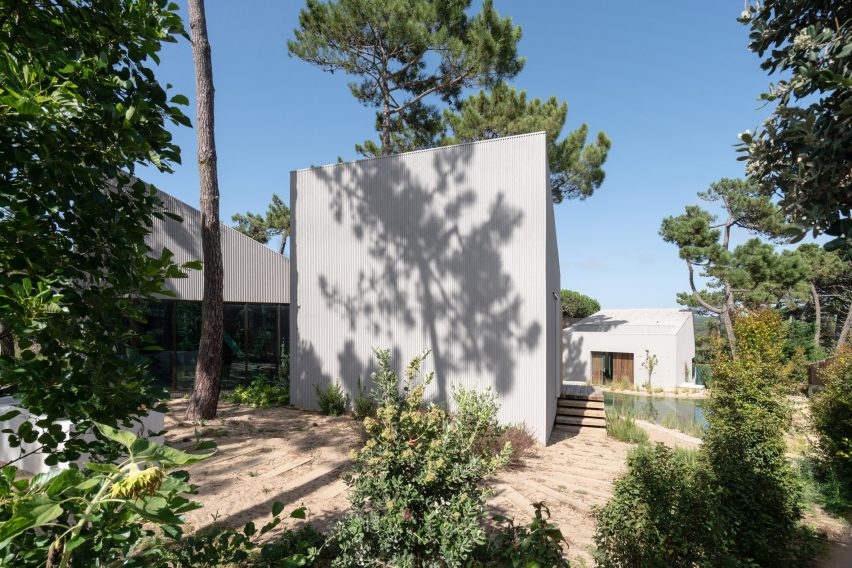
"There was a big effort to contain the built mass of the house between the existing trees", Atelier Data architect Rafael Gomes told Dezeen.
"Naturally, this pushed us for an early forecast of the house because we needed to understand the full impact of shading areas, constraints in visual relations and limitations of space that all this would generate," he added.
"This involved understanding exactly which trees were healthy enough to be sustainable, and after that study, how should construction work to preserve them – from start to finish."
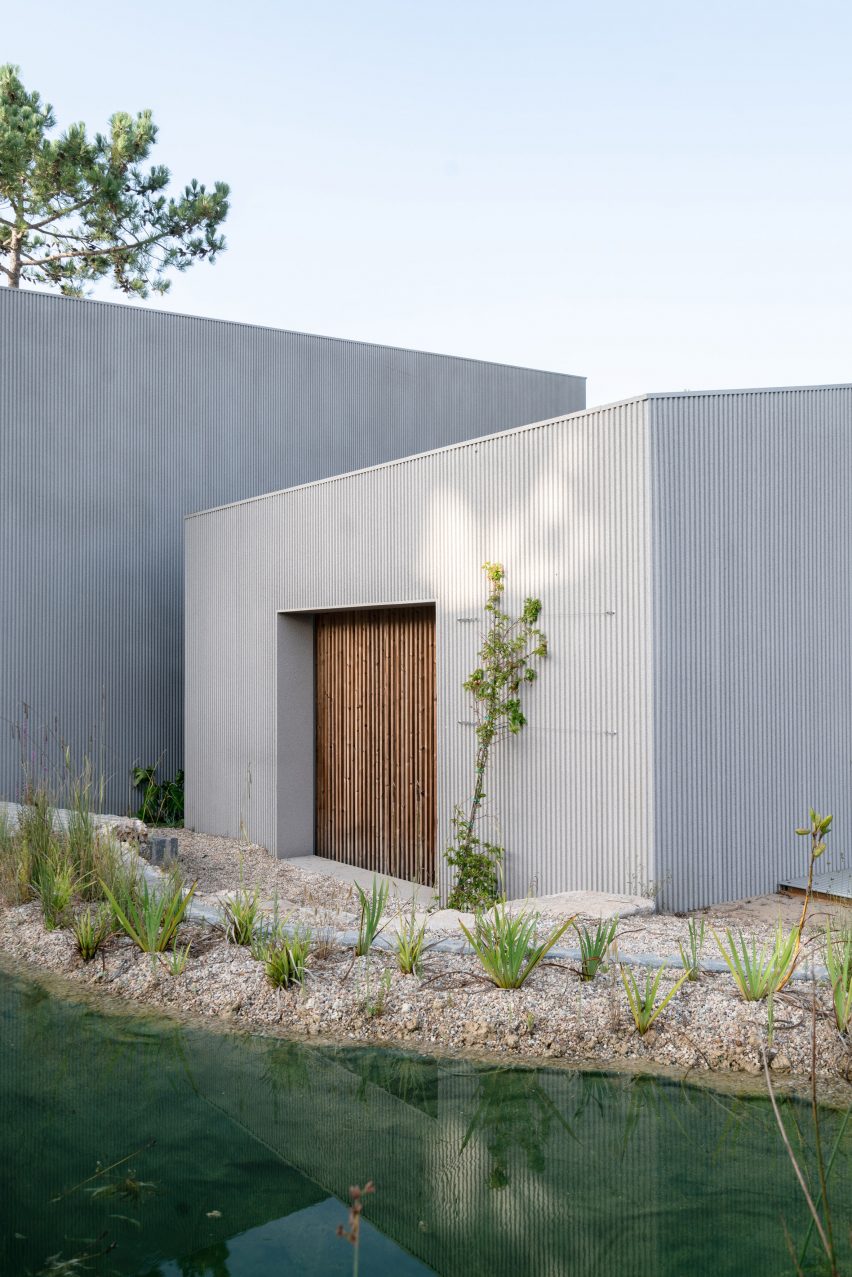
Connected with narrow corridors, each of Praia Grande's volumes has a different use. The entrance and the kitchen are located in one rectangular building, which is sat next to a larger volume that holds the house's main living room.
Next to the entrance on one end sits a smaller volume that holds an office, while two square buildings with ensuite bedrooms sit at opposite ends from each other and furthest from the living room.
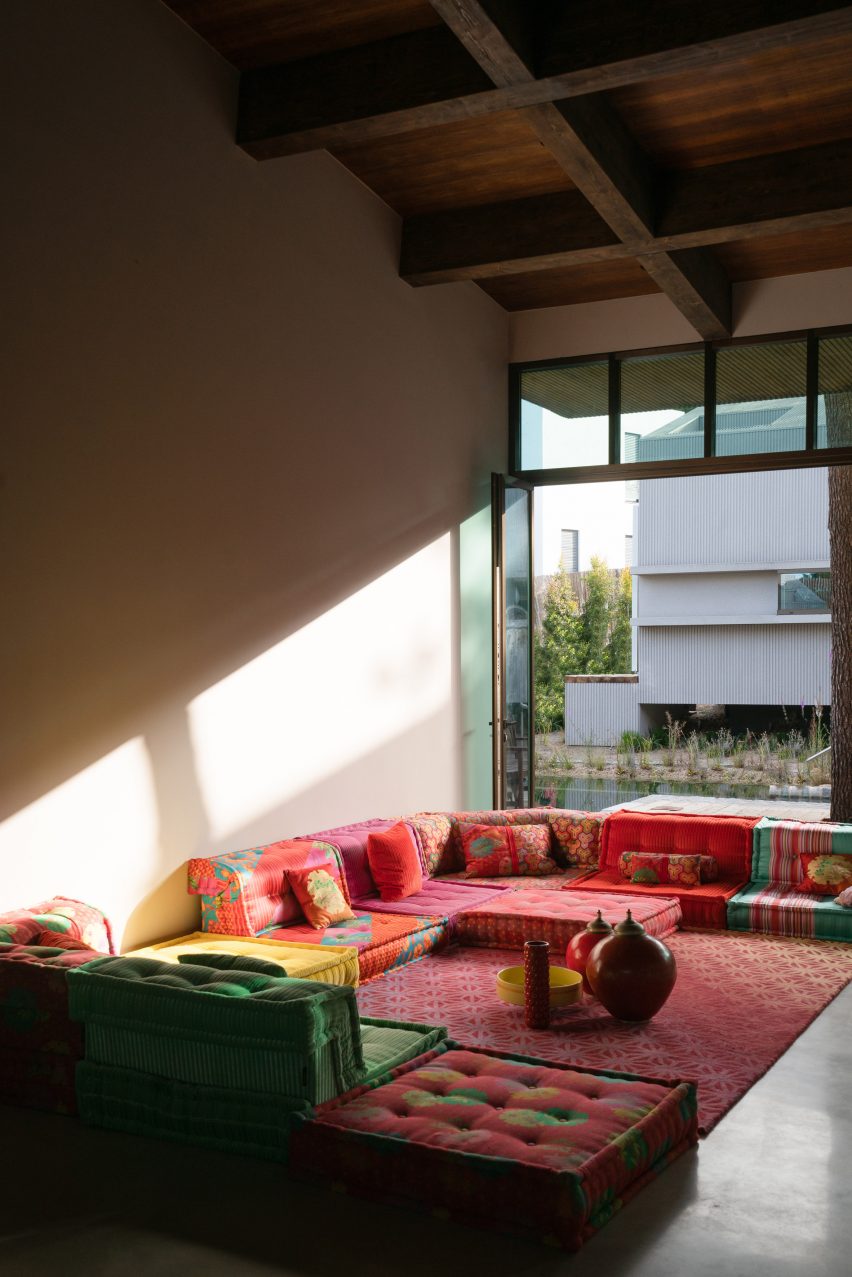
The volumes that hold the bedrooms both have their own patio, which allows access to the swimming pool.
The five buildings were organised in a semi-circle to leave an empty space in the centre where the swimming pool, which was designed to resemble a natural pond, is located.
Featuring raw and earthy materials, the walls, floors and wooden elements of the house were finished with non-toxic materials.
"As we say informally, we 'could drink or eat every single part and component that the house has'," said Gomes.
"The walls were painted with 100 per cent natural paints; the floor was finished without using any chemical varnish, and the wooden elements are from sustainable harvest processes and have been protected with products totally free of formaldehyde."
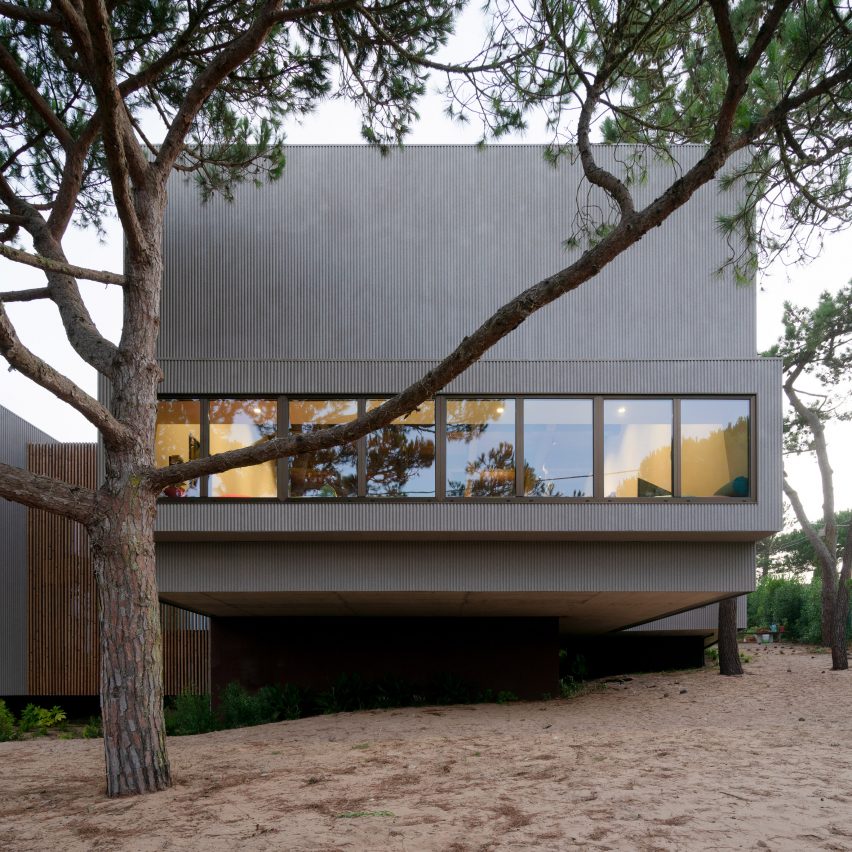
Atelier DATA said the design of the house was motivated by the dialogue between the surroundings and the built volumes.
"The national park of Sintra-Cascais acted as a main vehicle for us in terms of what the house should be, right from the start," said Gomes.
"It impacted the development of the project both physically and visually."
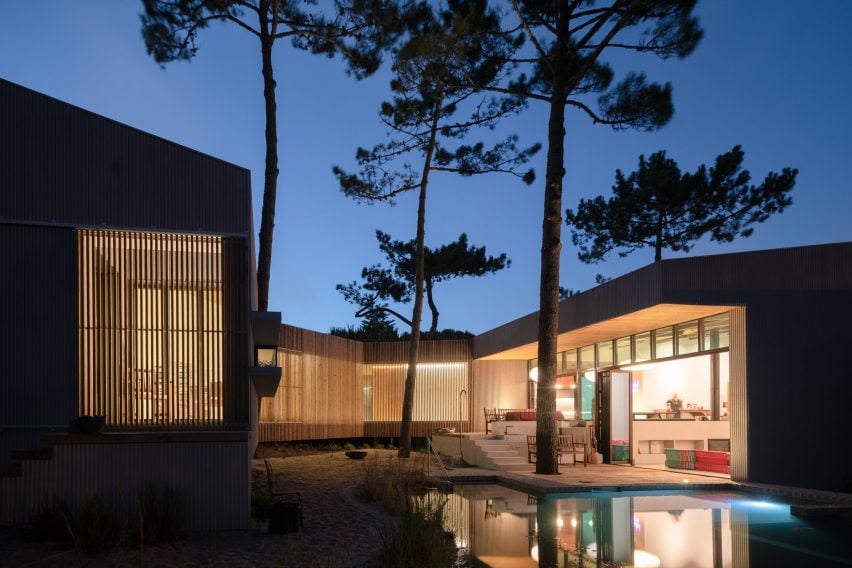
According to the practice, other ecological principles were implemented during the construction process apart from the use of non-toxic materials.
These include structures made of sustainably-resourced wood and a facade that ensures ventilation and durability.
Other projects by the practice include an extension of a farmhouse in the Portuguese region of Alentejo using a plain shape painted in white, and Casa Cabrita Moleiro, a holiday home in a former granary mill located in Portugal's Algarve region.
The photography is by Richard John Seymour.